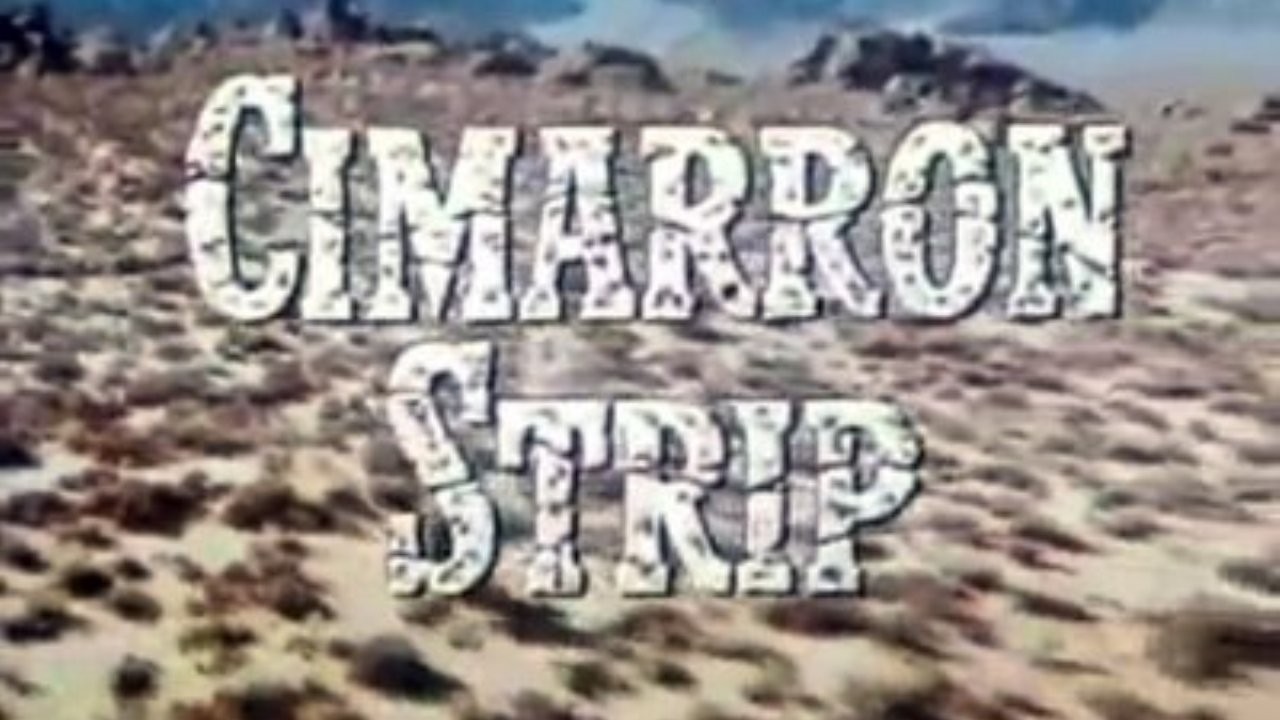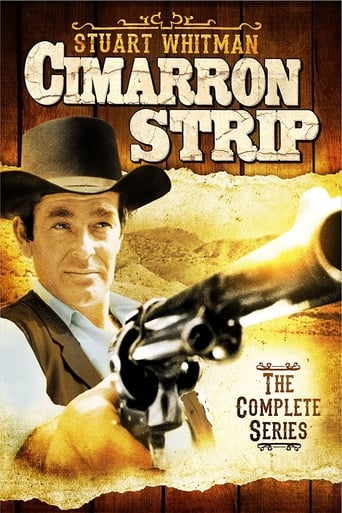

The short lived television series "Cimarron Strip" lasted one season on the air and it was originally broadcast in prime time on Thursday nights for the 1967-1968 season running 90 minutes in length(including commercials) and had some strong competition. "Cimarron Strip" went up against ABC's "Batman", "The Flying Nun", and "Bewitched" and it went up against NBC's "Daniel Boone", and "Ironside". The series was created by Christopher Knopf who was the executive producer of the show under Philip Leacock, Douglas Benton, and John Manley and produced by Bernard McEveety and Leonard Freeman for Whitman Productions in association with the CBS Television Network. The series produced 23 episodes in color that aired from September 7, 1967 until March 7, 1968. Reruns of all 23 episodes were aired during the summer of 1971 three years after it was canceled by CBS."Cimarron Strip" is one of only three 90-minute weekly Western series that aired during the 1960's(the others are NBC's The Virginian, and for one season Wagon Train) and the only 90 minute series of its kind during the 1960's to be centered primarily around one lead character in every episode. The series theme music was written and composed by Maurice Jarre who also scored the Oscar winning themes to Lawrence of Arabia and Doctor Zhivago. The series was set in the late 1880's in the Cimarron Territory where Marshal Jim Crown(Stuart Whitman) maintains law and order in the new territory with his two deputies as assistants one was the Scotsman MacGregor(Percy Herbert),and the young lad Francis Wilde(Randy Boone) and the caring young woman Dulcey Coopersmith (Jill Townsend).Several great writers ranging from Austin and Irma Kalish, Christopher Knopf, Jack Curtis, Dan Ullman, Stephen Kandel, Herman Miller, Mel Goldberg, David Jones, Hal Sitowitz, and Harlan Ellison. Veteran directors from Boris Segal, Vincent McEveety, Alvin Ganzer, Gerald Mayer, Richard C. Sarafian, Don Medford and Herschel Daugherty contribute to the great episodes that this series produced. Big name guest stars included Warren Oates, Andrew Duggan, Jack Braddock, Robert J. Wilke, Morgan Woodward, Steve Forrest, Royal Dano, Richard Boone, Joesph Cotton, Suzanne Pleshette and L.Q. Jones to name a few that appeared on this action packed Western series.The best episodes "Journey To A Hanging", "The Beast That Walks Like A Man", "Till The End Of The Night", "The Search", "The Battle of Bloody Stones", "The Roarer", "The Deputy", "The Judgment", "Nobody", "Heller", to name a few. Even 50 years later this was without a doubt not only ambitious but exciting to watch too. Cimarron Strip lived up to its title and then some.
... View MoreI recently discovered this show in reruns on Encore Westerns. I honestly never saw this show in its first run, and don't know how I missed it. Some of the best stories I've seen in Westerns, well directed, Stuart Whitman is very believable as Marshal Crown, tough and honest to a fault. I don't know how shows like this didn't last, yet Gunsmoke was on forever it seems. The Encore copies are around 1 hr 17 minutes each, so they appear uncut, and without commercials. The 1 1/2 hr format allows the story to be well developed and to have multiple twists. I am quite genuine in saying shows like this are non existent anymore. The prints are not great, especially when compared to Big Valley or Bonanza which appear to have been restored. Now I wish someone would run "Lancer", "High Chaparral", "Branded", "Have Gun Will Travel" among other old westerns.Cimarron Strip is top drawer among westerns right up with my personal favorite - "The High Chaparral".
... View MoreI've caught the show once or twice on TBS (I think)--early Saturday mornings. Thing is--it's been edited down to a 60 minute show--so as to more easily sell it for syndication. There goes much of the dramatic complexity of it. Also--it isn't called 'Cimarron Strip'. It's 'Marshall Crown'--I believe. I even tried @ a video store near me--Audio Video Plus--& I found some of them. I think Stuart Whitman, himself, might own the rights these days. I LOVED this series. Others were 2-dimensional, by comparison. Jim Crown was a former gunslinger, who had reformed. Sometimes, friends from the bad old days would show up--thinking they'd be cut slack. Wrong. Well--Crown WOULD try to dissuade them from illegal activities--to no avail. He'd end up having to kill his old friend--w/much remorse. I remember reading that, when CBS cancelled the show, they issued a memo, explaining that the characters should be either good or bad--no shades of grey. In other words, the show was too sophisticated for it's time.
... View MoreThis was a great series featuring the tough but tender Jim Crown. Plenty of action and gunplay kept the stories interesting each week. One year a friend and I kept count of the men Crown killed as compared to Matt Dillon. I don't remember which marshall came out on top, but the difference was only 2 bodies. I didn't miss an episode of this one, not only because Jim Crown was so cool, but I also liked looking at "Biscuit". Of course, MacGregor was always good for a laugh or two. Great show.
... View More